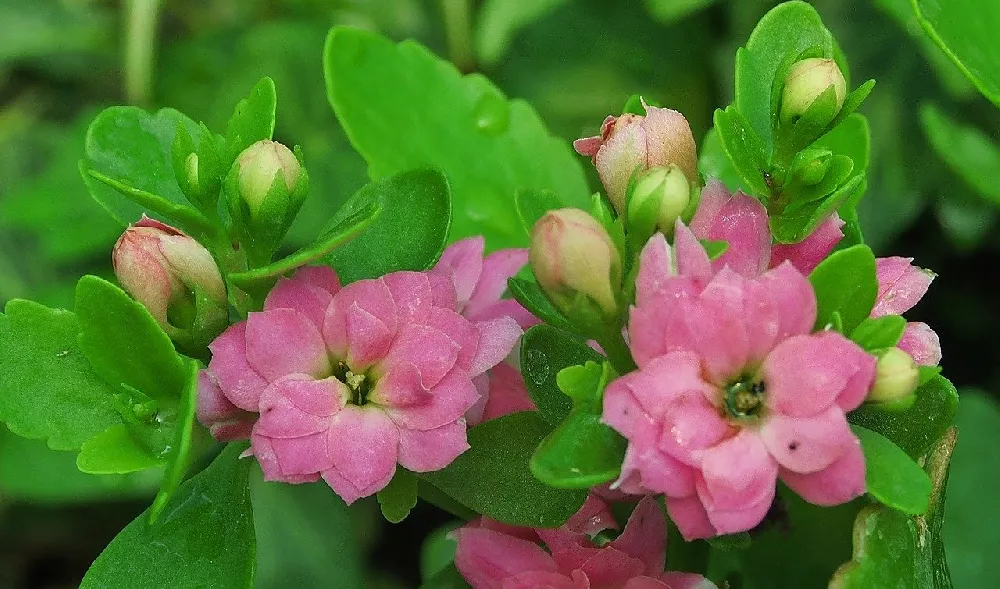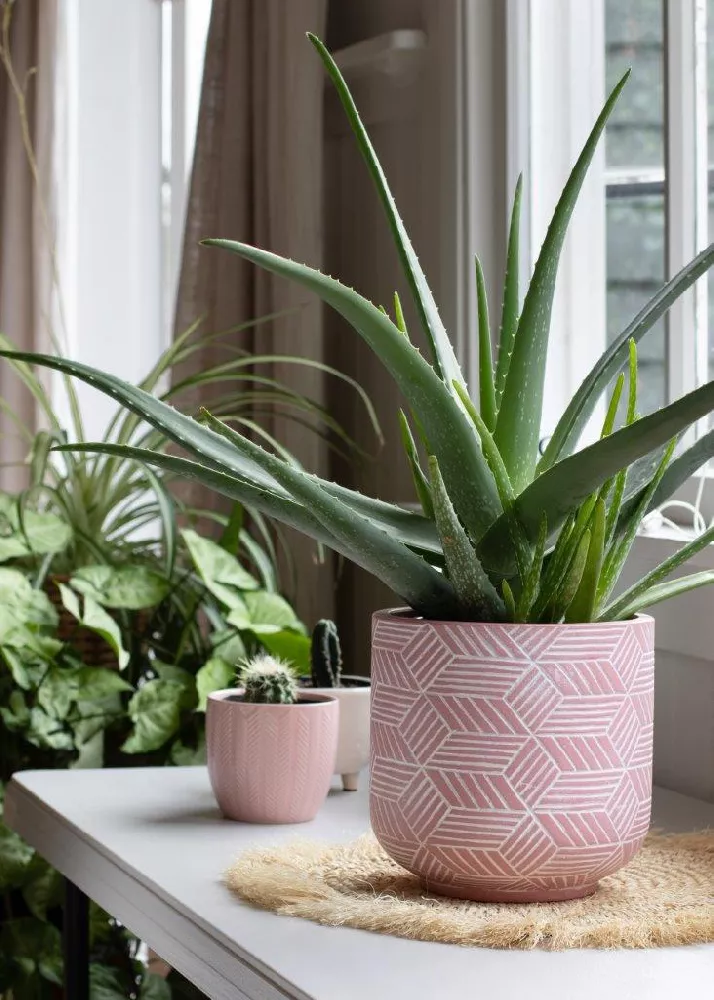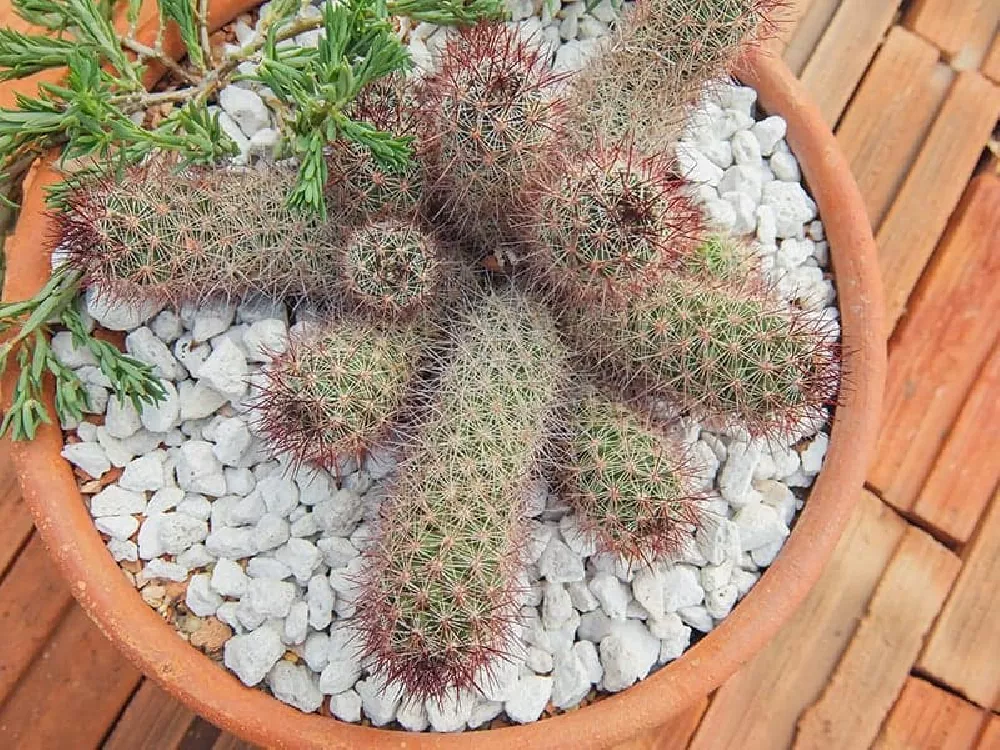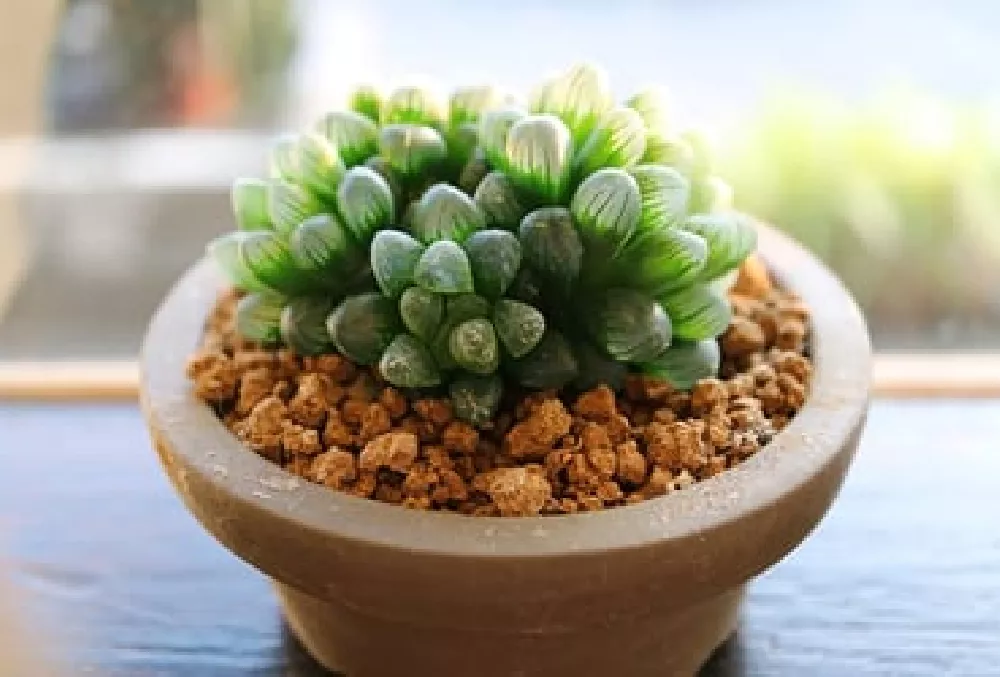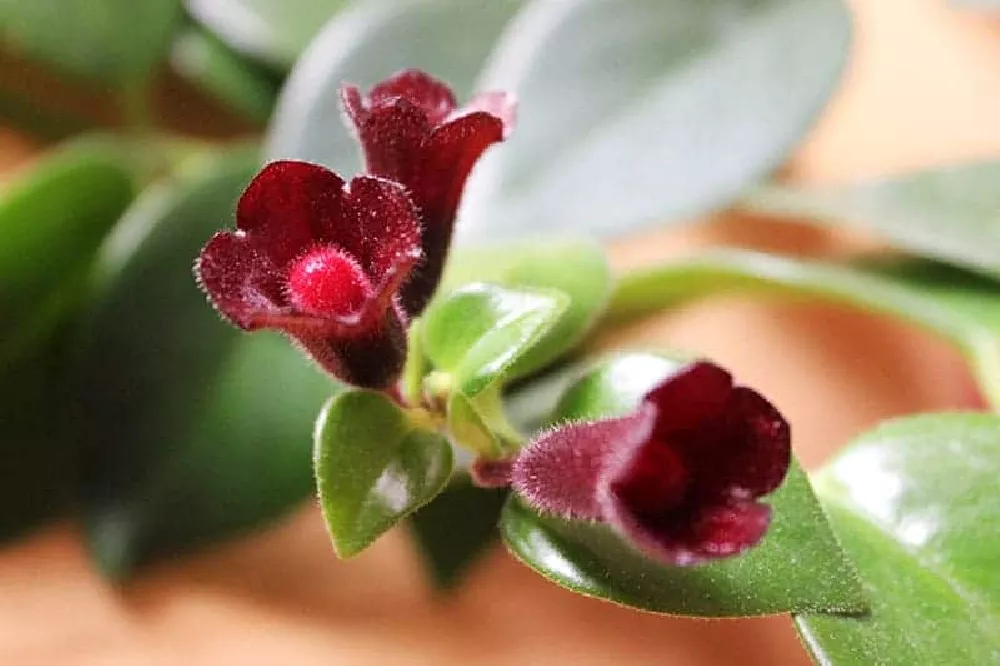- Home >
- Houseplants >
- Flaming Katy
Flaming Katy for Sale - Buying & Growing Guide
Plant Care
Sunlight

Grows best in full sunlight. When indoors this plant should receive bright indirect light.
Watering
Avoid overwatering this plant. Only supply water when the soil is entirely dry to the touch.
Fertilizing

Enjoys monthly fertilization with a balanced formula high in the three main nutrients.
The Flaming Katy (Kalanchoe blossfeldiana) brightens up a sunny room in your home, on a patio, or planted in-ground. This Madagascarian native is a popular houseplant because of its compact size and bright blooms. Here are some other interesting facts about the Flaming Katy:
- This plant is easy to care for and requires very little maintenance.
- The striking bursts of colored blooms are single (four petals) or double-flowering (up to 26 petals), making the Flaming Katy a feisty living specimen.
- It’s perfect for gifting, as a centerpiece, or as an element of beauty for a windowsill.
Planting and Care
Planting instructions
The Flaming Katy can be planted outdoors as a container plant or in border/edging situations if you are in zones 10-11.
When planting outdoors, temperatures should ideally be between 55 and 70 degrees Fahrenheit. Note that this plant is not frost-hardy. Ideally, they should be planted in containers on your patio, deck, porch, etc., to make it easy to bring indoors as temperatures drop. When planting in-ground, avoid areas prone to pooling water. Select an area with full sun and well-draining soil (sand/loam). Plants should be spaced eight to twelve inches apart to avoid overcrowding.
For indoor planting, use well-draining potting soil (60% peat moss, 40% perlite). Select a container that’s one to two inches larger than the plant and place it in a sunny area. Terracotta containers do best for succulents because they do not retain as much moisture as other containers do. Also, make sure the plant receives bright, indirect light.
Watering and nutrients
Succulents (including the Flaming Katy) prefer a drier environment, so it’s important not to overwater. Knowing when to water your plant is as easy as feeling the soil. If the soil is dry to touch, water well, but don’t overwater. Too much water encourages fungal disease that can stunt growth or kill the plant. To discourage foliage disease, always water your plant at the base while avoiding wetting the foliage.
To feed in-ground plants, use a 20-20-20 fertilizer once a year with a light application. For container/indoor plants, use Miracle-Gro Succulent Plant Food once a month to provide the necessary nutrients.
Pollination
The flowers on a Kalanchoe plant contain anthers that produce pollen. Nectar glands are also located at the base of petals. Once the plant flowers, seeds are produced. Pollinators and other wildlife feed on the pollen and nectar. Hummingbirds, bees, butterflies, and ants in particular contribute to plant pollination. However, Kalanchoe plants require pollen from another Kalanchoe to reproduce by growing plantlets. Plantlets will compete against the mother plant, so it’s recommended that you remove the plantlets to another container for planting.
Pruning
To prune during bloom, remove the dead flowers with your fingers. Using your shears, cut the flower stalk down to the third leaf. Remove or cut any brown or decayed leaves and stalks. Remove any debris from the soil (leaves, etc.) to prevent disease.
To prune after bloom, wait until all of the flowers have fallen or wilted. Remove any remaining dead flowers. You will be trimming your stem a third of the way down at the nearest leaf node that points in the desired growth direction. Snip the stem at a 45-degree angle. Remove any debris from the soil to discourage disease.
Pests, diseases, and animals
Common pests such as mealy bugs, aphids, and brown scale are problematic. Remove aphids by hand. Brown scale requires a bit of scraping to remove. An alcohol wipe removes mealy bugs.
Powdery mildew, root rot, and fungal diseases are common problems. Cultural controls to prevent these issues include not overwatering your plant, using well-draining soil, and avoiding getting the leaves wet. Chemical controls include Bonide Remedy fungicide.
Although many gardening hobbyists vow the plant is safe for animals, it isn’t. Kalanchoe plants contain a glycoside that is highly toxic to pets (dogs, cats, birds, small animals) and ruminant livestock (cows, goats, horses.) The flowers (which attracts pets) contain the highest concentration of glycosides. When ingesting the plant, the glycoside affects heart function in as little as 12 hours and can last as long as five days.
Temperature
Ideally, the Flaming Katy should be in a temperature range of 55° F – 85° F, though it isn’t terribly temperamental when it comes to temperature. If the temperature drops a few degrees below 50° F for a brief period, then the plant will probably be okay, and likewise if the temperature rises a few degrees over 85 °F. That being said, the plant will not do well in frost, so if you put your Flaming Katy outside for the summer months, then be sure to bring it back inside before the first frost arrives. The plant will also not tolerate excessively hot conditions, and will need extra water during heat waves.
Light
The Flaming Katy enjoys bright, indirect light, though for short periods of time, you can move the plant to a more shaded area of your home. While the plant is in bloom, its common to want to sit the plant in a darker space- on a shelf or table with little light to brighten up the area. This plant will be okay with that in the short-term, but after around four weeks, you will need to move it to a better lit spot.
To encourage the plant to bloom time and time again, you will need to allow it at least a few hours of indirect, bright light each day. Without this the plant will not flower again, and may even die completely. A windowsill benefitting from several hours of light each day would be ideal, though make sure you filter any direct light with a shade or window blind (Flowers and Plants Association).
Humidity
The Flaming Katy plant is not fussy when it comes to humidity, and any level of humidity will be fine. The plant will not need any misting and humidity isn’t something you need to be concerned with.
Repotting
This plant is often only kept in the home while it is flowering. The foliage of the plant isn’t very interesting to look at and trying to get the plant to flower again is sometimes more trouble than it’s worth. For this reason, many people throw the Flaming Katy away after the flowers have died, and will therefore never have cause to repot it.
However, if you choose to keep this plant in your home, it will need to be put in a new pot around every two years. Try to do this in the springtime, carefully removing the plant from its current pot without disturbing the root ball. Plant it into a new pot one size bigger than the previous pot, using a well-draining soil mixed with builder’s sand. Extra care must be taken when re-potting the Flaming Katy because the leaves are quite brittle and can be very easily snapped or damaged.
Flowers
The flowers on this plant are the stars of the show, and really, they are the only reason that anyone would buy a Flaming Katy. It is common for the plant to have around 50 flowers blooming at the same time, which is quite something given the small stature of the plant. When it is in full bloom, the plant looks very striking, with masses of flowers in various vibrant colors.
The blooms are usually single flowers with four petals, or double flowers with eight petals. Common colors for the Flaming Katy’s flowers are pink, orange, red, yellow, purple, and white.
Flowers on the Flaming Katy can be short-lived, lasting just a few weeks, though it is possible for the plant to flower for a month or more if it is carefully cared for, with dead flowers being removed frequently. Keeping the plant in a cool spot will also help to prolong the life of the flowers.
Though this is often a throwaway plant after the flowers have died, you can keep the plant around for longer and encourage it to bloom again. As long as it gets the right light, the Flaming Katy can bloom time and time again.
Propagation
Propagating this plant is easy, and for some people, it is the better option for getting new flowers instead of trying to get the mother plant to bloom again. Propagation can be achieved through leaf or stem cuttings. Simply cut a stem from the mother plant a few inches in length and allow it to dry out for a few days before doing anything with it. Once it has dried out, you can plant in in soil, where roots should begin to grow within a few weeks. Rooting hormone can be used to encourage successful propagation, though this is usually a personal preference.
Common Problems
No new blooms
Getting the Flaming Katy to produce new flowers can sometimes be a challenge. Professional growers can get this plant to bloom at any time of year by tricking it into thinking it is a different season with the use of artificial light. To get your Flaming Katy to re-bloom, you’ll need to do this yourself to some extent. The plant will need long night time hours and few day time hours to produce new buds. Ensure the plant is getting enough light during the day by setting it on a bright windowsill.
Many growers allow the plant to rest during October, better enabling it to produce new blooms afterwards. Beginning in October, allow the plant to only receive moderate light during the day and put it in a dark room for 14 hours each night. Do not feed it during this time and allow very little water. Follow this plan for around six to eight weeks, by which time, the plant should be starting to bloom. Following this period of rest, resume normal care and enjoy your new flowers
Deadheading the plant when it flowers and cutting off flowering stems once they are spent will also encourage new blooms.
Wilting leaves
Wilting leaves are either caused by too much or too little water. Given that the Flaming Katy is a drought resistant plant, the likelihood will be that it’s wilting leaves are a product of overwatering. An easy way to check is to simply feel the soil. If it is moist, then the wilting leaves are almost certainly an overwatering issue. If the soil is very dry, it could be that you haven’t watered the plant enough.
Overwatering will often result in root rot, which kills the roots and prevents them from supplying water and nutrients to the plant, thereby killing it. If you suspect root rot then the plant needs to be repotted in fresh, well-draining soil. Root rot is often so severe that the plant cannot be saved, so don’t expect too much from your plant if the roots are in poor condition.
Dropping leaves
A Flaming Katy losing leaves can be due to a number of things. Most commonly, a sudden temperature drop of lower than 50° F will cause the leaves to drop. As this is often sold as a Christmas plant due to its ability to flower through the winter, it’s easy for the plant to be inadvertently exposed to very low temperatures. If you suspect this is the case, ensure it is at a comfortable home temperature away from cold drafts to allow if to recover.
The Flaming Katy plant will also drop leaves if exposed to excessively high temperatures, though this is generally much less likely than the opposite issue of low temperature.
Overwatering and underwatering can cause the plant to shed its leaves. Underwatering leads to dehydration of the leaves, which will cause them to drop, while overwatering leads to root rot, which cuts off the plants supply of water and nutrients, causing leaf drop.
Yellowing leaves
Usually caused by insufficient light, the leaves of the Flaming Katy will turn yellow and eventually drop off if they are not allowed access to a few hours of light each day. Move the plant to a more suitable location, where it should recover.
Powdery mildew
Powdery mildew starts of as a speckled white coating on the leaves and stems of the plant, looking almost like it has been dusted in powder. If left untreated, this will then progress to a white fluffy texture, causing ill health and death of the plant.
The Flaming Katy is quite susceptible to powdery mildew, especially when kept in low light conditions at around 70° F in temperature. Poor air flow also increases the likelihood of your plant becoming victim of powdery mildew, so try to keep the plant in an area of good air flow and bright light to prevent this issue from occurring. If you notice powdery mildew on your plant, you will need to cut off any leaves that are badly affected and treat the rest of the plant with a fungicide.
Powdery mildew is highly contagious, so keep it away from any other plants you have and treat it quickly. If caught early, the plant should recover well, but a quick diagnosis and treatment is vital as powdery mildew can very quickly kill a plant.
FAQs
Can I cover my Flaming Katy that is planted in the ground during frosts and winter?
Does the Flaming Katy have bloom colors other than red?
This Kalanchoe species comes in red, orange, pink, yellow, and white. You can also get single-blooming (four petals per flower) or double-blooming (up to 24 petals per flower). It’s interesting to note that this plant is a nocturnal bloomer. As night time sets in, temperatures drop in their natural habitat encouraging the flowers to open. An air-conditioned room will also cause the same effect.
How big will a Flaming Katy plant get?
The wonderful thing about Flaming Katy plants is their compact habit and rounded form. Rarely do they get any larger than one foot in height or spread. Routine pruning (during or after bloom) helps to encourage plant growth and hardy flowers.
Where did the Flaming Katy plant come from?
Native to Madagascar, the plant genus Kalanchoe was first officially recorded as Kalanchoe by botanist Michel Adanson in 1753. A German seedsman (Robert Blossfeld) hybridized two species into what became known as Kalanchoe blossfeldiana (Flaming Katy) in 1932. He introduced the new species to the world in Paris, France. Through time, this plant became a popular houseplant throughout Europe, making its way into the homes of Americans.
Is “Kalanchoe” the term used for Flaming Katy plants?
“Kalanchoe” is the genus of numerous flowering succulent plants that belong to the Crassalucaea family. The Flaming Katy (Kalanchoe blossfeldiana) is a species of Kalanchoe. Each species of Kalanchoe has differing characteristics.
